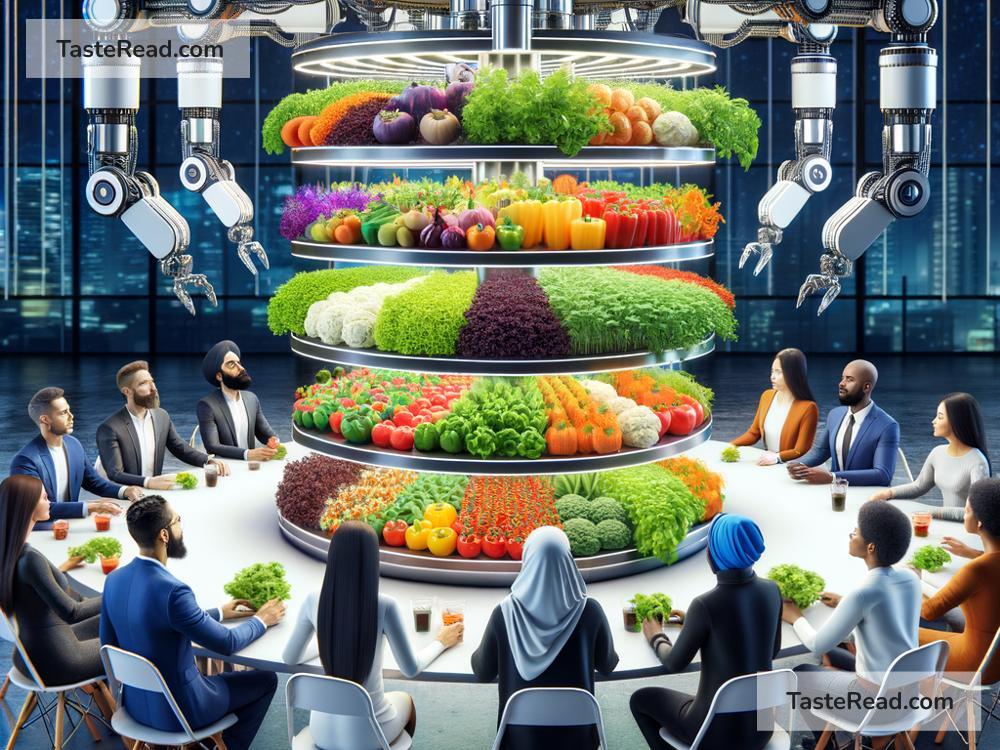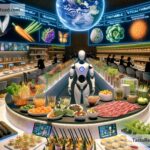The Future of Food: Building Collaborative Global Models for a Sustainable World
Food is one of life’s most essential needs. But as the world grows, we face big challenges in making sure everyone has enough to eat and that the food we produce is healthy and sustainable. Issues like climate change, population growth, unequal access to food, and environmental damage are changing the way we think about the future of food.
How can we make sure future generations have enough to eat without hurting the planet? The solution doesn’t lie with one country or one group—it requires collaboration on a global level. By working together, nations, businesses, scientists, and communities can create systems that ensure food security for all while protecting the Earth. Let’s explore what the future of food could look like and how collaborative models can help.
The Challenges We Face
Today, the world’s food system is under strain. By 2050, the global population is expected to exceed 9 billion people. Feeding this growing population will require 70% more food than we produce today, according to estimates by the United Nations. But increasing food production won’t be easy. Here are some key challenges:
-
Climate Change: Rising global temperatures are affecting crops, reducing yields, and increasing the risk of droughts and floods. Some regions may no longer be able to grow certain foods.
-
Loss of Biodiversity: Overfarming and deforestation are destroying ecosystems, killing off plants, animals, and insects that play critical roles in maintaining agricultural health.
-
Food Waste: A staggering amount of food is wasted every year—around one-third of all food produced globally. This waste contributes to greenhouse gas emissions and deprives people who don’t have enough to eat.
-
Malnutrition and Inequality: Millions of people still don’t have access to sufficient food, while others consume too many unhealthy, processed choices. The gap between food-rich and food-poor communities continues to widen.
Innovations in the Future of Food
Fortunately, researchers, farmers, and innovators are coming up with solutions that could transform the way we grow, distribute, and consume food. Here are some of these exciting ideas:
-
Vertical Farming: Growing crops in indoor spaces with stacked levels—like inside warehouses or skyscrapers—saves land and water. Vertical farming also allows food to be grown closer to urban areas, reducing the need for transportation.
-
Alternative Proteins: Traditional meat production uses a lot of resources and harms the environment. Lab-grown meat, plant-based proteins, and insect farming are emerging as eco-friendly, nutritious alternatives.
-
Precision Agriculture: Using drones, sensors, and apps, farmers can monitor crops in detail, applying water, fertilizer, and pesticides only where needed. This reduces waste and boosts efficiency.
-
Genetically Modified Crops: Scientists are developing crops that are resistant to diseases, tolerate harsh weather, and require fewer resources. While genetic modification is controversial in some countries, it has great potential to combat food insecurity.
-
Food from the Ocean: Ocean farming could become more important in the future. Growing seaweed and shellfish requires no land, freshwater, or fertilizer, making it highly sustainable.
Why Collaboration is Key
No single country or organization can solve the food crisis alone. The problems we face are interconnected—and so are the solutions. Collaborative global models bring together governments, universities, businesses, nonprofits, and local communities to share knowledge, resources, and technology.
Here are some ways collaboration can shape the future of food:
-
Sharing Agricultural Technology: Richer nations have advanced farming tools and techniques that can benefit developing nations. Partnerships can ensure that farmers everywhere have access to tools for improving productivity.
-
Global Research Networks: Scientists working across borders can study climate-resilient crops, sustainable farming practices, and technologies to reduce food waste. Collaborative research speeds up innovation.
-
Inclusive Food Policies: Governments need to work together to create policies that improve food systems while considering factors like trade, climate agreements, and biodiversity protection.
-
Supporting Local Farmers: Empowering small-scale farmers globally will ensure balanced food production. International organizations can provide education, funding, and fair market access.
-
Reducing Food Waste Together: Global efforts to tackle food waste—such as campaigns, better packaging, and technology—can prevent loss at every stage of production.
The Role of Communities and Individuals
While collaboration at the global level is important, small, local contributions are just as crucial. Community-led farming cooperatives, urban gardens, and awareness campaigns can make a big difference in the future of food. Individuals also play a role by making choices that support sustainability—like eating locally-grown food, wasting less, and trying alternative proteins.
By working together, people around the world can create food systems that are fair, sustainable, and capable of adapting to future challenges.
A Hopeful Vision for the Future
The future of food depends on how quickly we act and how well we collaborate. Imagine a world where healthy, sustainable food is accessible to everyone. Countries share resources instead of competing for them. Farmers use advanced technology to grow more with fewer resources. People waste less, and oceans and forests are protected.
This vision isn’t out of reach—it just requires effort from all of us. By coming together, we can build a global food system that feeds us today and for generations to come.
The future of food is bright, but only if we work together. Let’s start today.


